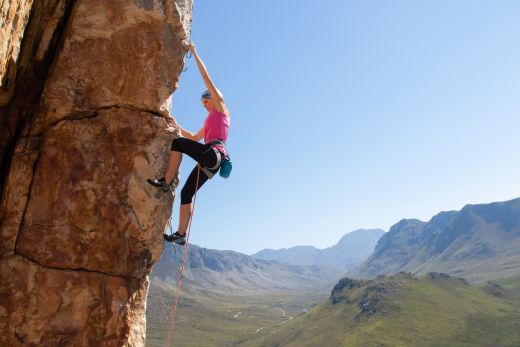If you only recently got into rock climbing, you might have already heard of disciplines like sport climbing, trad climbing and lead climbing, and are wondering what these are exactly and how they differ from each other. This article answers those questions and then goes on to tell you what gear you need for sport climbing and how to get started. Because there is a lot for a new climber to learn – more than I could fit into a single article – I have also included links to other articles that rock neophytes will find useful.
- What is sport climbing?
- What is the attraction of sport climbing?
- Send it!
- Gear for sport climbing
- Technical skills needed for spot climbing
- Movement skills used in sport climbing
- How to get into sport climbing
- Where to sport climb
What is sport climbing?
Sport climbing is a type of climbing where the climber is protected by a rope and permanent gear – usually bolts – drilled into the rock. Unlike trad climbing, which also involves the use of a rope, sport climbing doesn’t require any protection besides quickdraws. Everything else he needs is already on the wall. Beyond this strict definition, sport climbing can be very varied. It can involve gymnastic moves on steep rock or delicate balancy moves on bald slabs. Sport routes can be as well protected as a route in the gym, and bolts can be spaced far apart, raising the stakes on adventurous and committing routes.
Single pitch vs multipitch sport climbing
The other way in which sport climbing varies is that it can take place on single pitch or multipitch routes. A ‘pitch’ is a section of rock that can be climbed in a single push from stance to top anchors. This has to be shorter than the length of a rope (60 or 70 meters) and is usually much shorter. The majority of single pitch routes have top anchors no higher than 35 meters so that it is still possible for a climber to be lowered to the ground with a 70 meter rope after she has clipped the top.
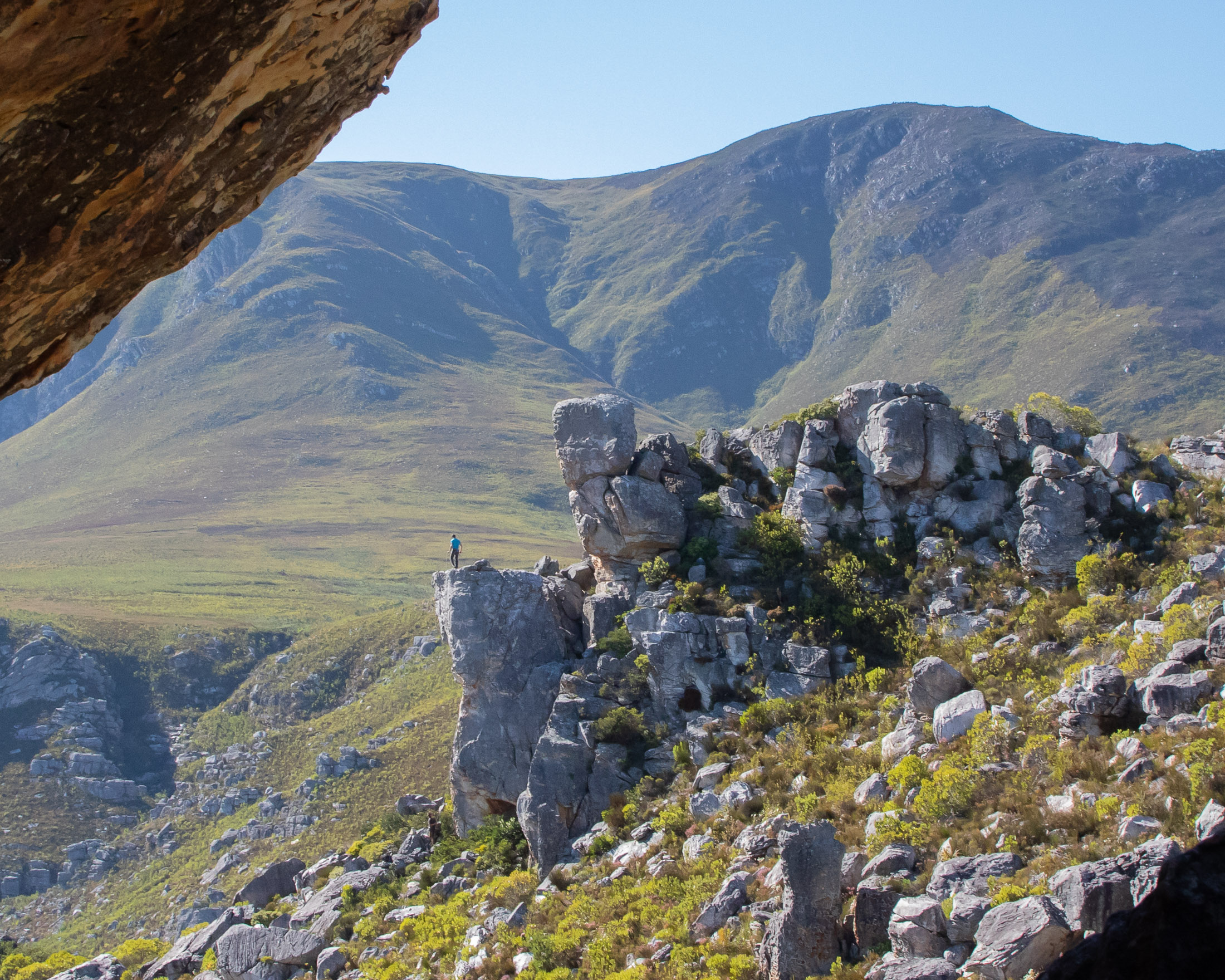
Multipitch routes differ from single pitch routes in that the leader doesn’t lower to the ground after reaching the top of the first pitch. Instead she builds a stance and belays up her partner. Once both climbers are at the top of that pitch (the second stance), the team repeats the process. One of the two climbers leads the next pitch, creates a stance, and then belays up the second on top rope. By doing this over and over, it’s possible to climb routes that are hundreds of meters high, although such a feat can require breaking a route up into a dozen pitches.
Lead climbing vs top-roping
Whereas trad and sport describes the type of protection used, lead climbing and top-roping refer to how the rope is used. In top-roping, the climber starts a climb with the rope already running through the top anchors with the belayer acting as a counterbalance on the other end. As the climber ascends, the belayer takes in slack to limit a fall if the climber comes off. In most cases, a fall on top rope is very short and gentle.
In lead climbing, the climber starts a route with the rope next to the belayer. As the climber ascends the route, she clips the rope through protection (bolts if sport climbing or trad gear if trad climbing). In this case, she can take a proper fall if she comes off the rock – typically at least twice the distance between herself and the last piece of protection. Although most falls are safe, the potential for a bad fall makes lead climbing inherently more risky.
Top-roping or following is an integral part of trad climbing and multi-pitch sport climbing, but in single pitch sport climbing, the focus is almost always on lead climbing. In fact you can only say that you have ‘sent’ a route (climbed it from top to bottom without falling or resting on the gear) if you have led it. Top-roping is typically reserved for rehearsing routes that a climber doesn’t yet feel ready to lead.
What is the attraction of sport climbing?
Bouldering is fun, and trad climbing can be a bigger mountain experience, but there are many aspects to sport climbing that make it the prefered discipline of many climbers, beginners and seasoned crushers alike.
Pull moves near your limit without worrying about protection
Sport climbing can involve adventurous or ‘old school’ routes with long stretches between bolts, but generally sport routes are well-bolted and have mostly safe falls. The attraction of such routes is that they lend themselves to fun, relaxed climbing and can allow climbers to push themselves to their limits without having to worry about their protection. But these aren’t the only reasons that sport climbing is the most popular form of roped climbing.
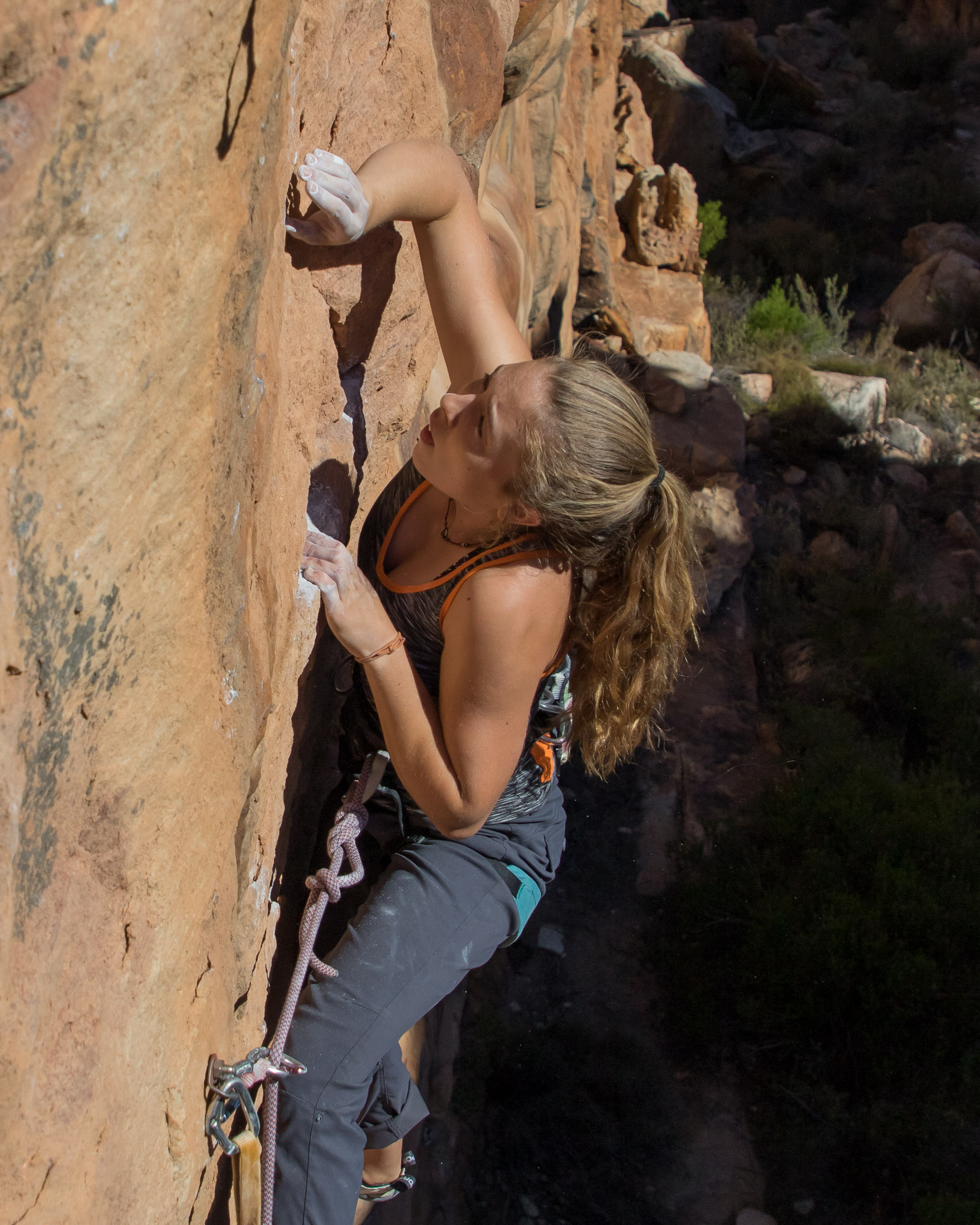
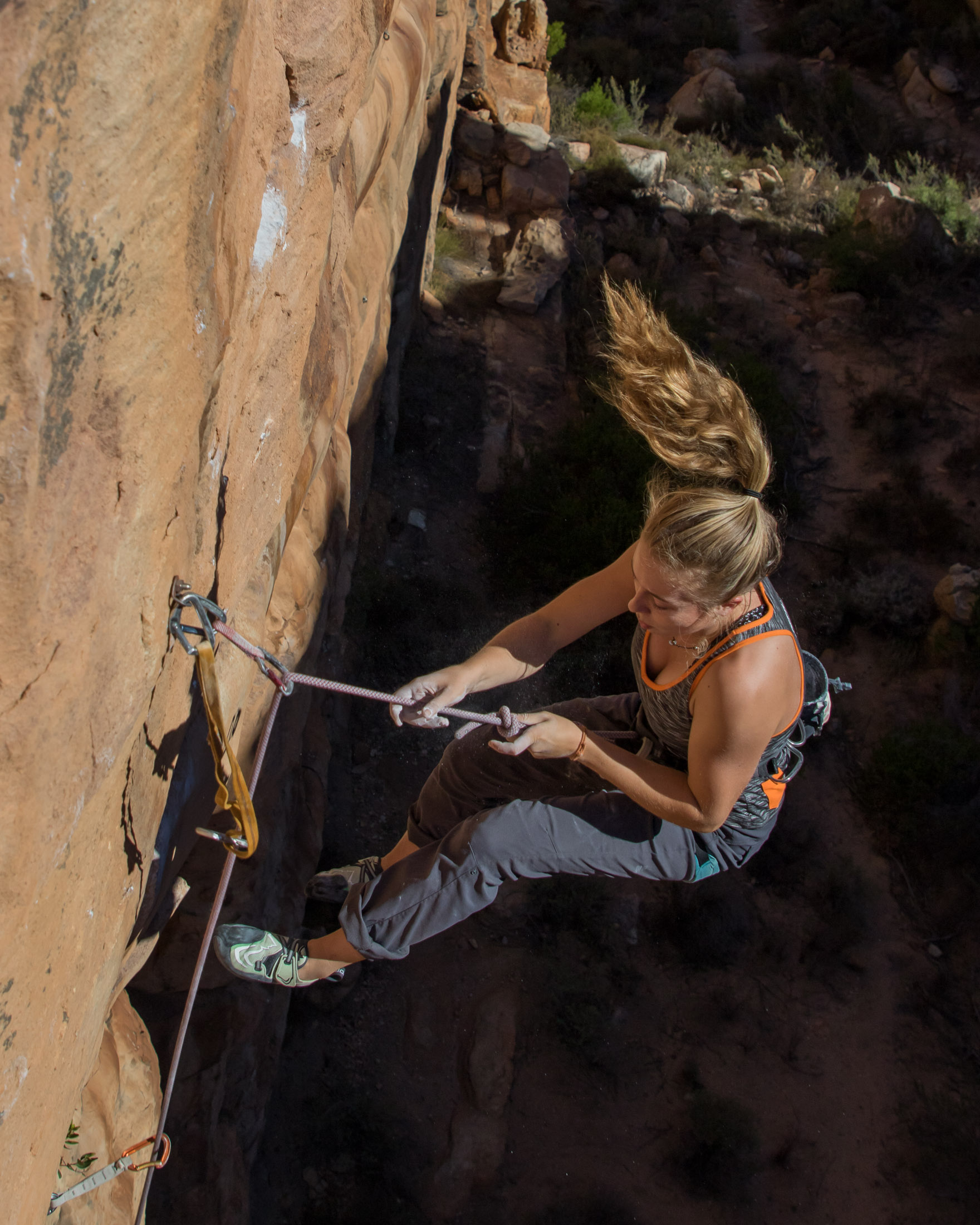
Climb faster and get your pitch count up
The other advantage of bolted protection is that it is a lot easier to clip than traditional protection. With a quickdraw, you simply attach one carabiner to the bolt and then clip the rope through the other. In some instances you might have to extend an alpine quickdraw first, but this is still much quicker and easier than first placing a piece of trad gear and then clipping a rope to it. As a result, sport climbing allows you to climb faster, which can ultimately mean that you get to climb more pitches in a single session – just what you want when you are trying to learn new movement skills.
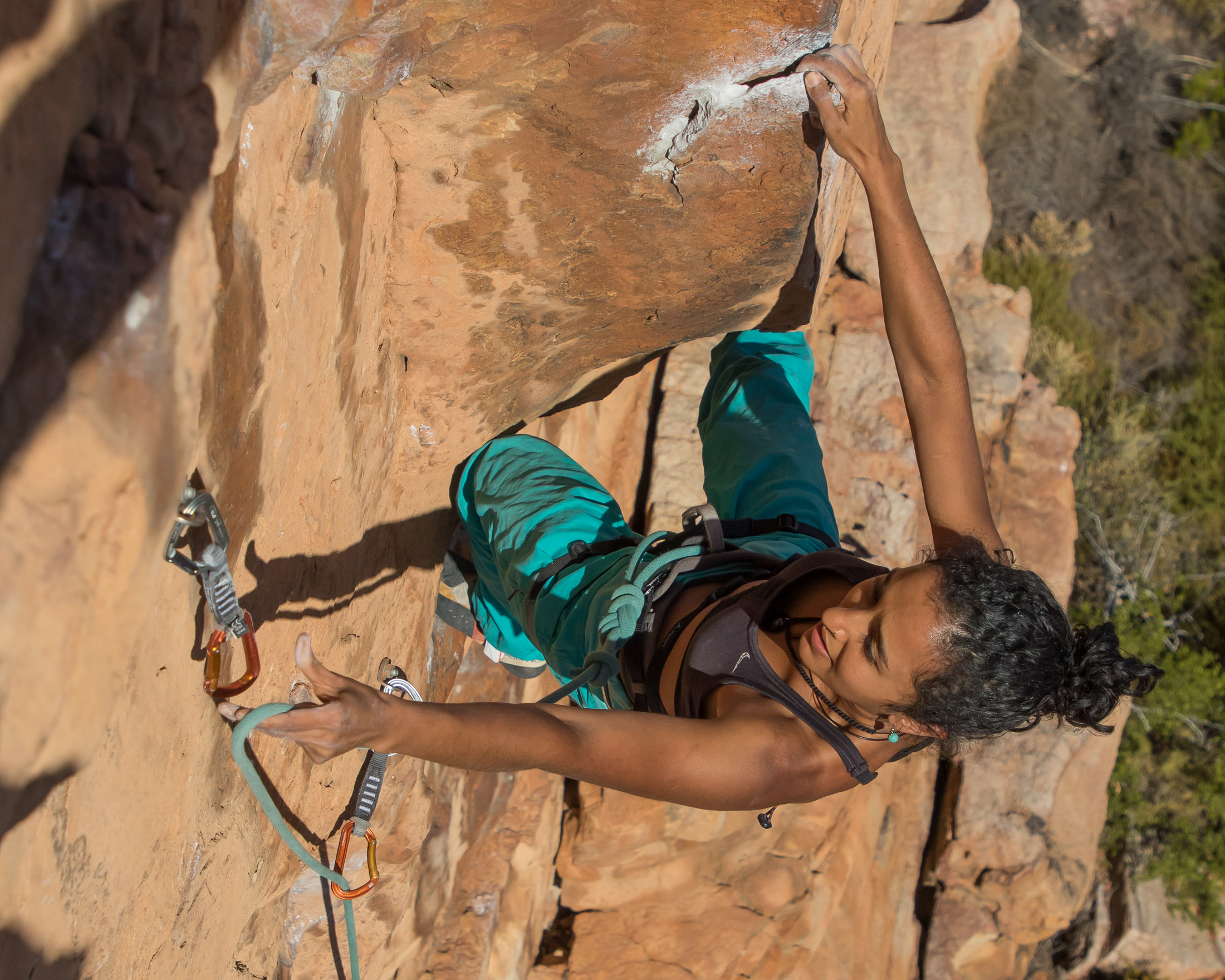
Get into climbing with less gear
Sport climbing simply requires less gear, and that equates to less money spent when you first get into climbing. Besides a harness, shoes, belay device and chalk bag, a sport climber only really needs a set of a dozen quickdraws, which will cost somewhere around $250 or maybe $350 if you need as many as 16 quickdraws. A full trad rack with two sets of cams, on the other hand, will cost at least $1000, a significant investment for most climbers.
Send it!
The main objective in sport climbing is to ‘send’ a route – climb it from the ground to the anchors in a single push and without falling or resting on the gear. But there are also different ways you can send a route.
Onsight
To onsight a route, you have to get onto it for the first time and then send with no prior knowledge of the moves or gear. You only ever get one onsight attempt on a route. If you blow that first try, you have to settle for a redpoint or pinkpoint. Given that you know nothing about the climb and only get one shot, onsighting anything close to your limit is very hard.
Redpoint
If you don’t get a route on your first (onsight) attempt, you can only still redpoint or pinkpoint a route. In the case of a redpoint, a climber sends a route after having tried it at least once and does so while placing protection (typically quickdraws). This last condition – the placing protection during the send – is what makes a redpoint harder than a pinkpoint.
Pinkpoint
A pinkpoint is almost the same as a redpoint – you send a route after having tried it at least once – but in this case, the protection is already hanging on the route. Given that a pinkpoint is slightly easier than a redpoint, climbers are more likely to pinkpoint when climbing routes at their absolute limit.
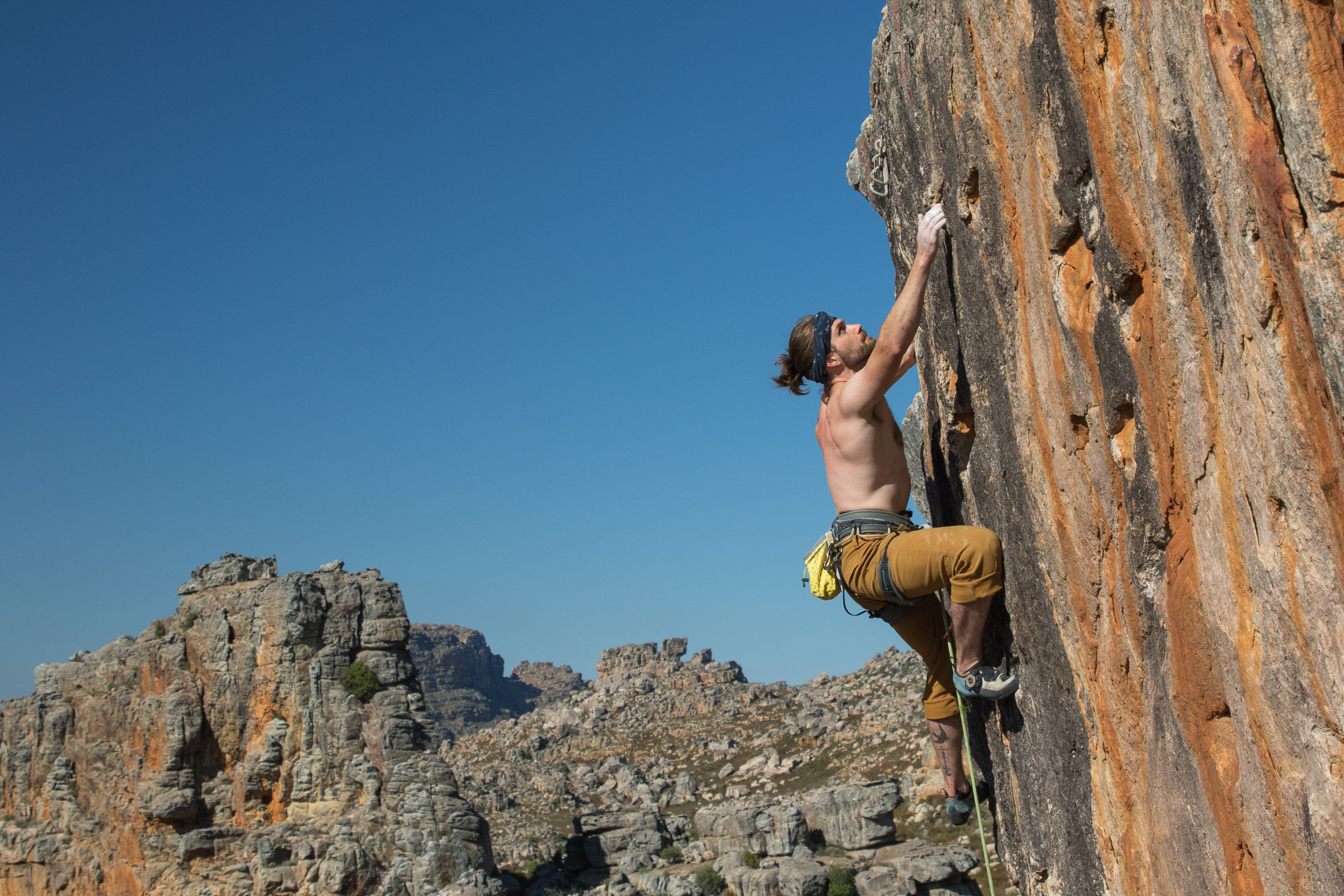
Gear for sport climbing
Although sport climbing requires less gear than trad climbing, there are at least a dozen items that a sport climber needs.
Rope
The best rope for general sport climbing is between 9.5 and 9.8 mm in diameter and 60 or 70 meters long. You can go thinner than that, but then your rope will wear faster. You could also get an 80 meter rope, but that would be more rope than you need if your local routes don’t include many over 35 meters. When buying a new rope, check if the middle has been marked. If it hasn’t, ask a store employee to mark it for you, or buy some rope marker and do it yourself.
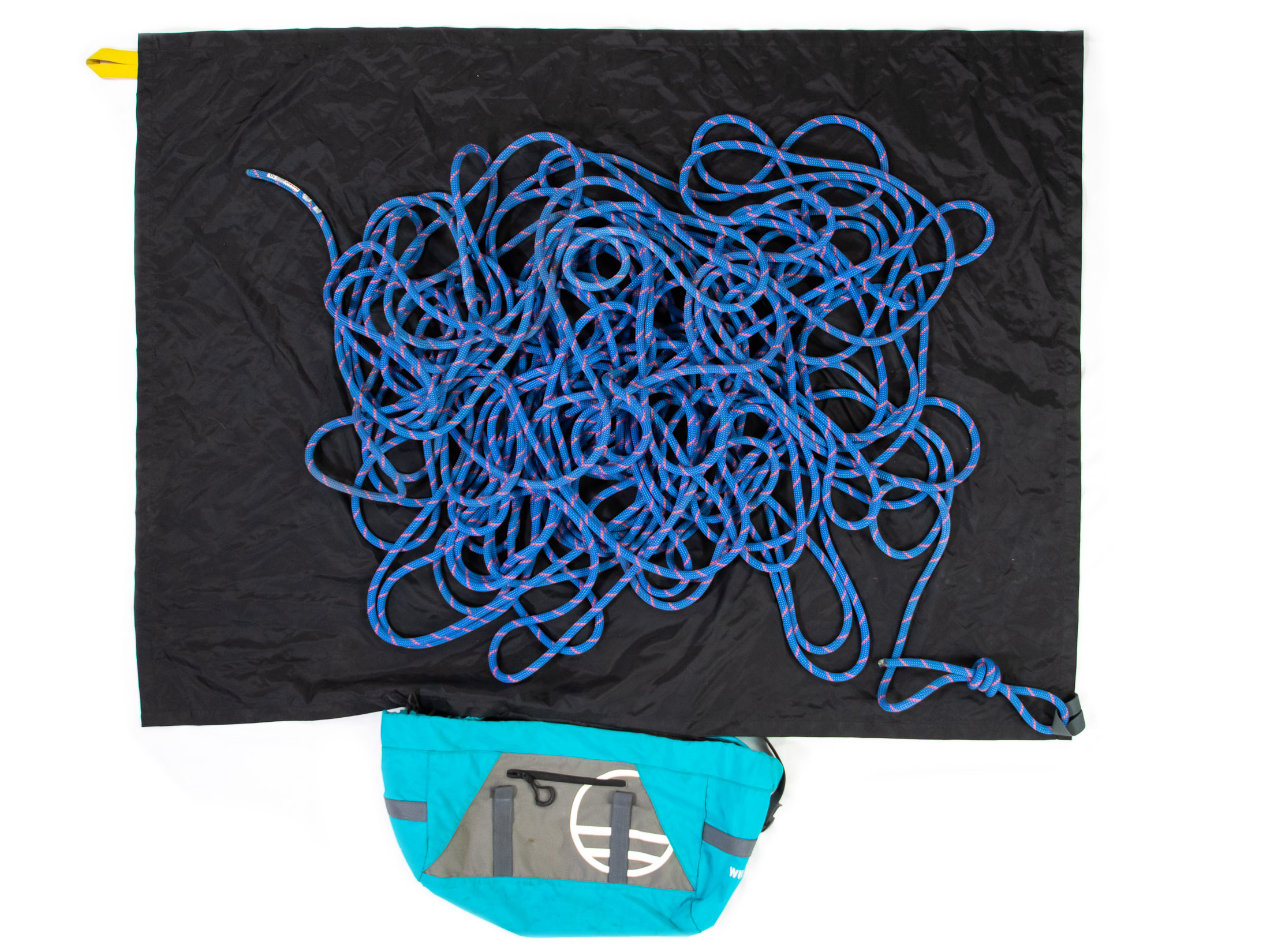
Quickdraws
Light gear isn’t as important to a sport climber as it is to a trad climber. The average sport rack will weigh half of a trad rack even without you trying to slim it down. So there’s no need to skimp here. Look for full size carabiners with a smooth clipping action. Many climbers prefer solid gates on both carabiners, but a wiregate can also make a good rope-side carabiner. You need between 12 and 16 of these depending on the length of routes in your area.
Belay device
Many sport climbers prefer some kind of auto-braking belay device like a Grigri, as this kind of device offers an additional level of safety when used properly, and it makes things easier for a belayer if the climber spends a lot of time hanging. But the most versatile type of device is actually a guide mode tubular device like the Petzl Reverso. With this type of device, a climber can also rappel on two strands – a common method of descent on many multiptich routes.
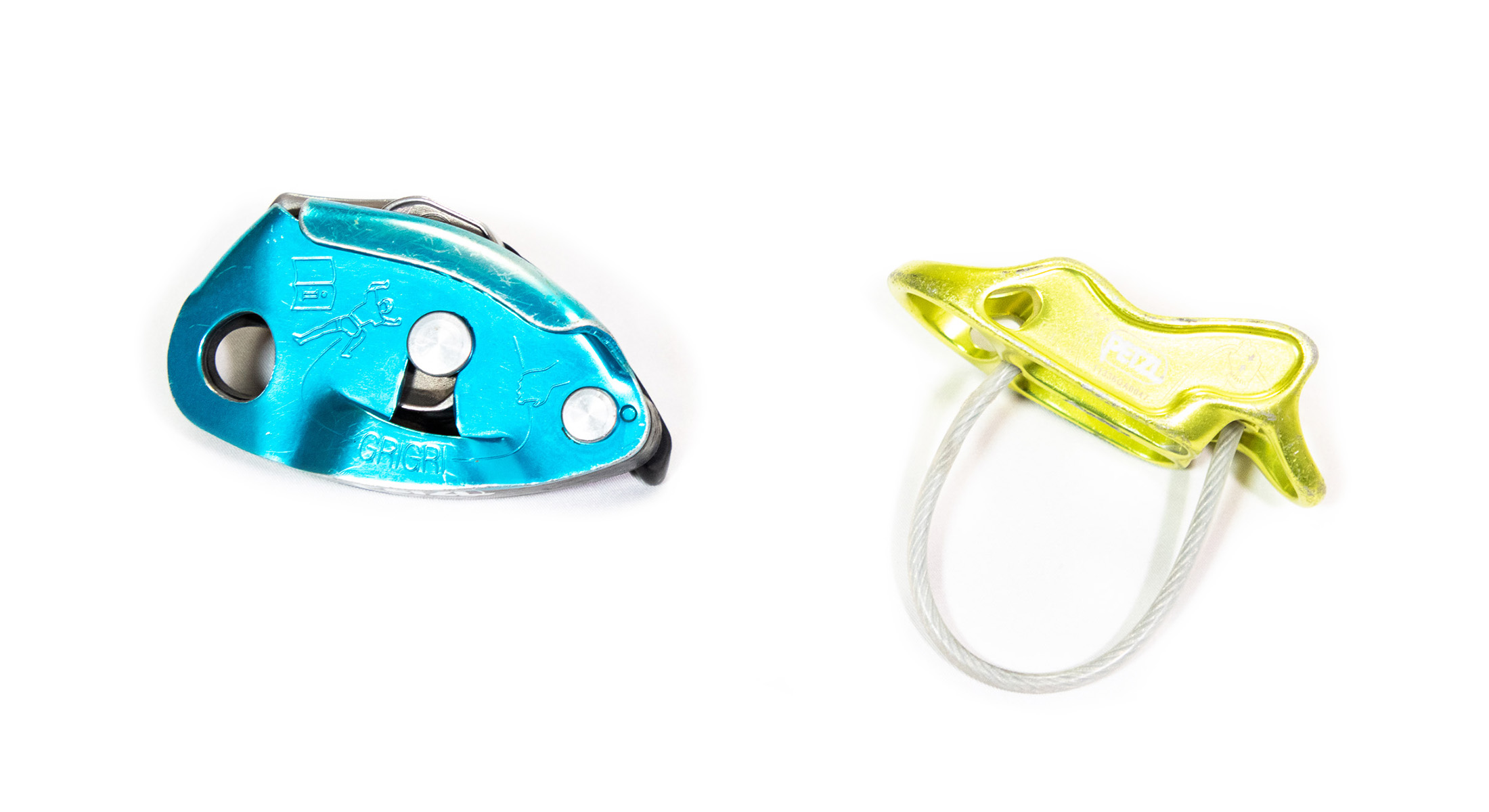
Harness
Experienced sport climbers who specialise in hard routes might favour skimpy harnesses for their light weight and maximum freedom of movement, but the best harness for the average sport climber is an all-rounder with a moderate amount of padding – enough to make a hanging belay comfortable if you get into multipitch climbing. There’s no need to go with adjustable leg loops unless the average non-adjustable harness just doesn’t fit you.
Personal anchor system
There are at least two ways to clean your quickdraws from the top anchors of a route. One of these methods requires the use of some kind of leash to secure yourself to the anchors. You could use a regular 60 cm nylon sling, but an adjustable personal anchor system makes the job a lot easier. A PAS is also very useful when setting up rappels and changing over on multipitch climbs.
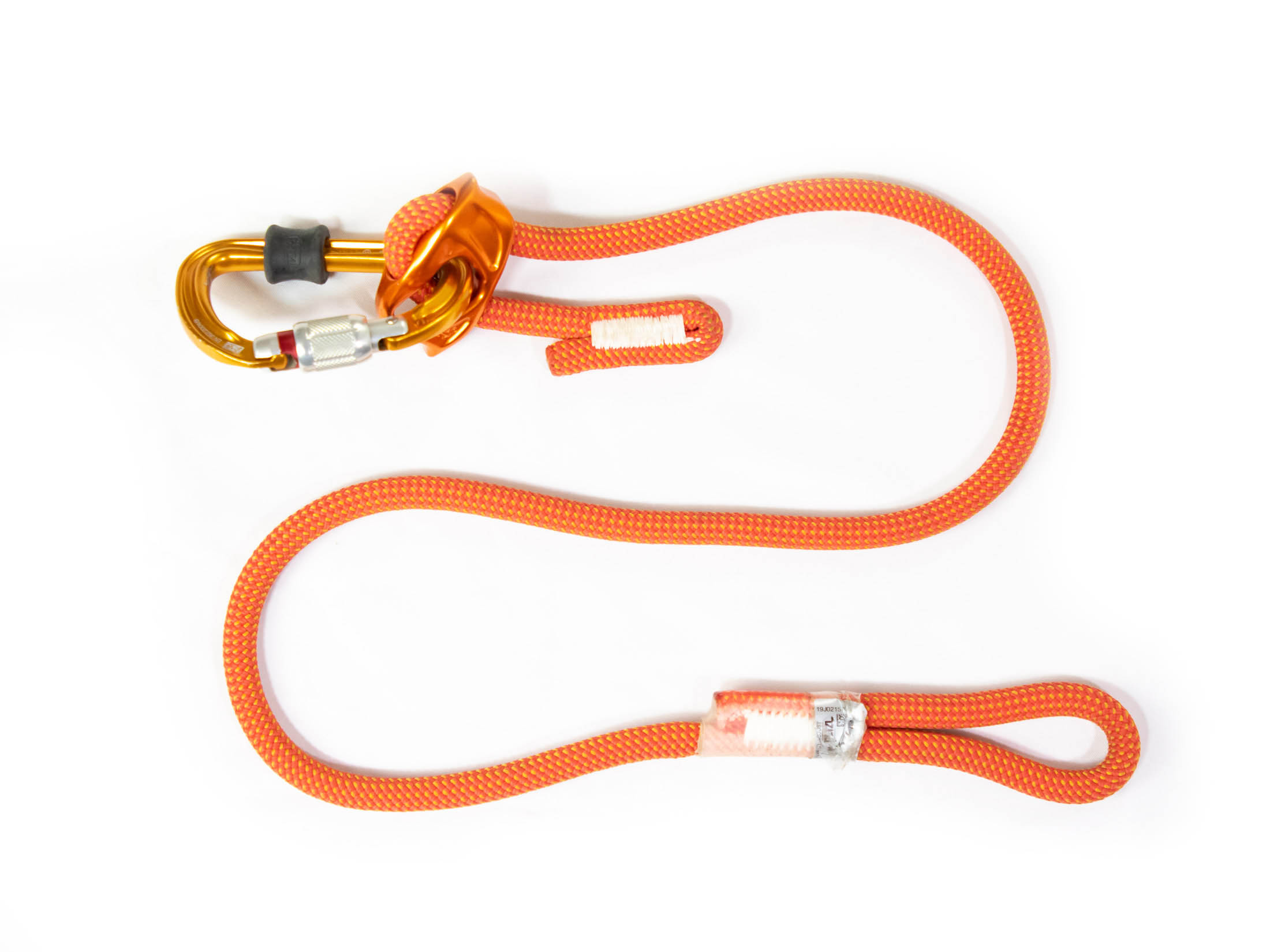
Shoes
A climber's choice of shoes should depend on their ability and the type of rock they climb. There’s no need to squeeze your feet into tight shoes if you’re only climbing 5.10’s. Likewise, you don’t need a pair of aggressive downturned shoes if you climb a lot of low angled or merely vertical rock. For more detailed advice on how to choose rock shoes, see my gear guide on climbing shoes.
Helmet
Helmets were once only worn by trad climbers, but many sport climbers have since become wise to the risk of head injuries and have started to don lids too. Fortunately, climbing helmets aren’t as ugly or goofy as they once were. In addition to styling improvements, helmets have also become a little more specialled, and today you can choose from models that are more robust or durable and those that are lighter and better ventilated.
Crag bag
You’ll need a bag for carrying all your gear to the crag. You can use a regular backpack, but this will get beat up with regular use. Purpose-made crag bags on the other hand are designed to withstand the wear and tear that comes from being repeatedly picked up and put down, dragged around, and squeezed through narrow passages. 40 litres is a good size for sport climbing.
Chalk bag
Things don’t get much more utilitarian than a chalk bag. It’s a little bag. It holds chalk. It usually has a strap to go around your waist. This last feature is important as it will allow you to reposition your chalk bag so that it's within easy reach of a certain hand while you’re getting a shake out. Other features that you might look for are brush slots and a closure system that works properly – prevents chalk from going all over the inside of your pack.
Technical skills needed in sport climbing
Every style of climbing requires its own set of skills. While some of the following also apply to trad climbing, there are at least a few skills that are particularly useful to a sport climber.
Belaying
Besides helping to keep your partner safe, a good belay can instil confidence in a leader, inspire her to push her limits, and generally make the whole experience more enjoyable. Learn how and when to give a soft catch, and you will find yourself with no shortage of potential climbing partners.
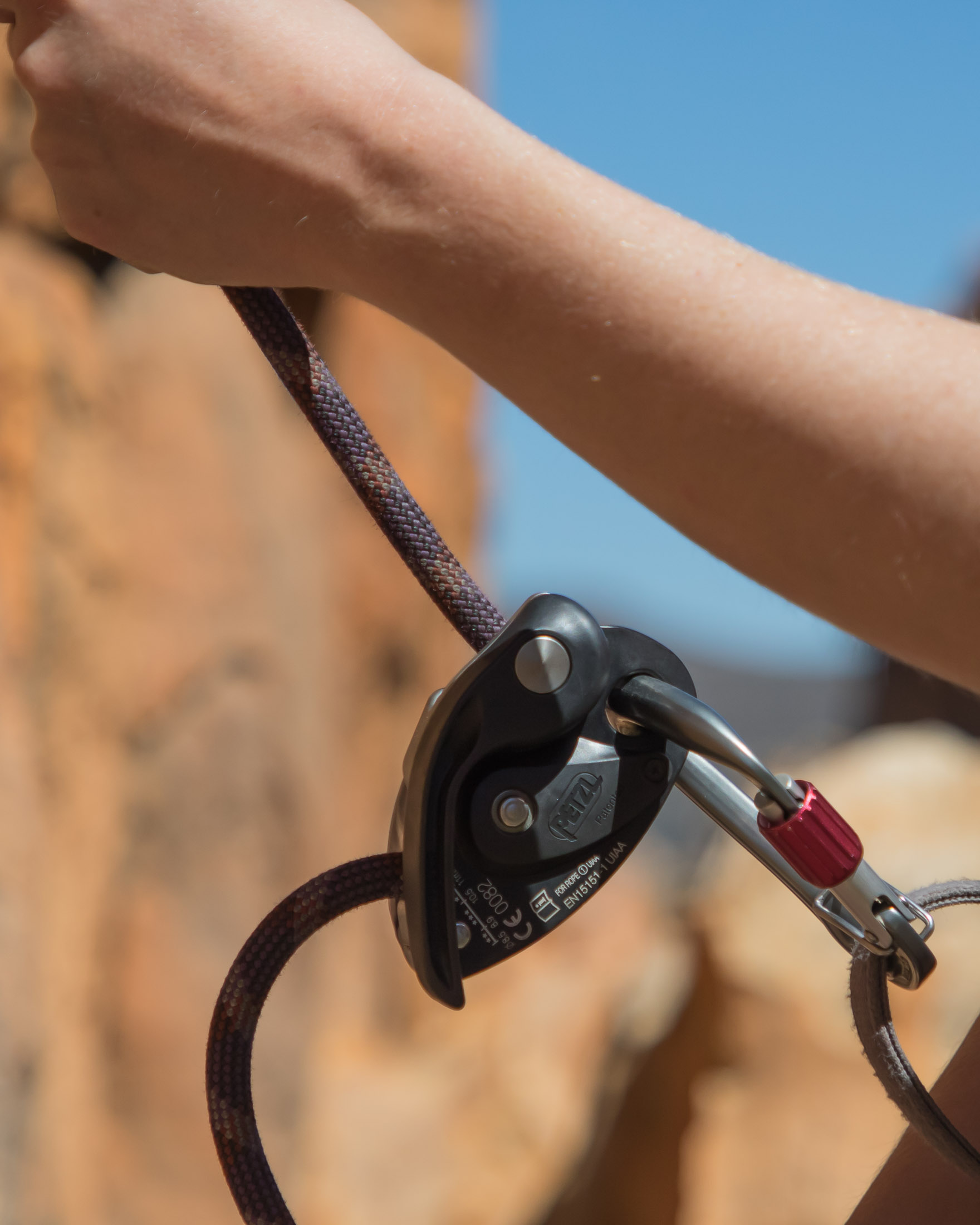
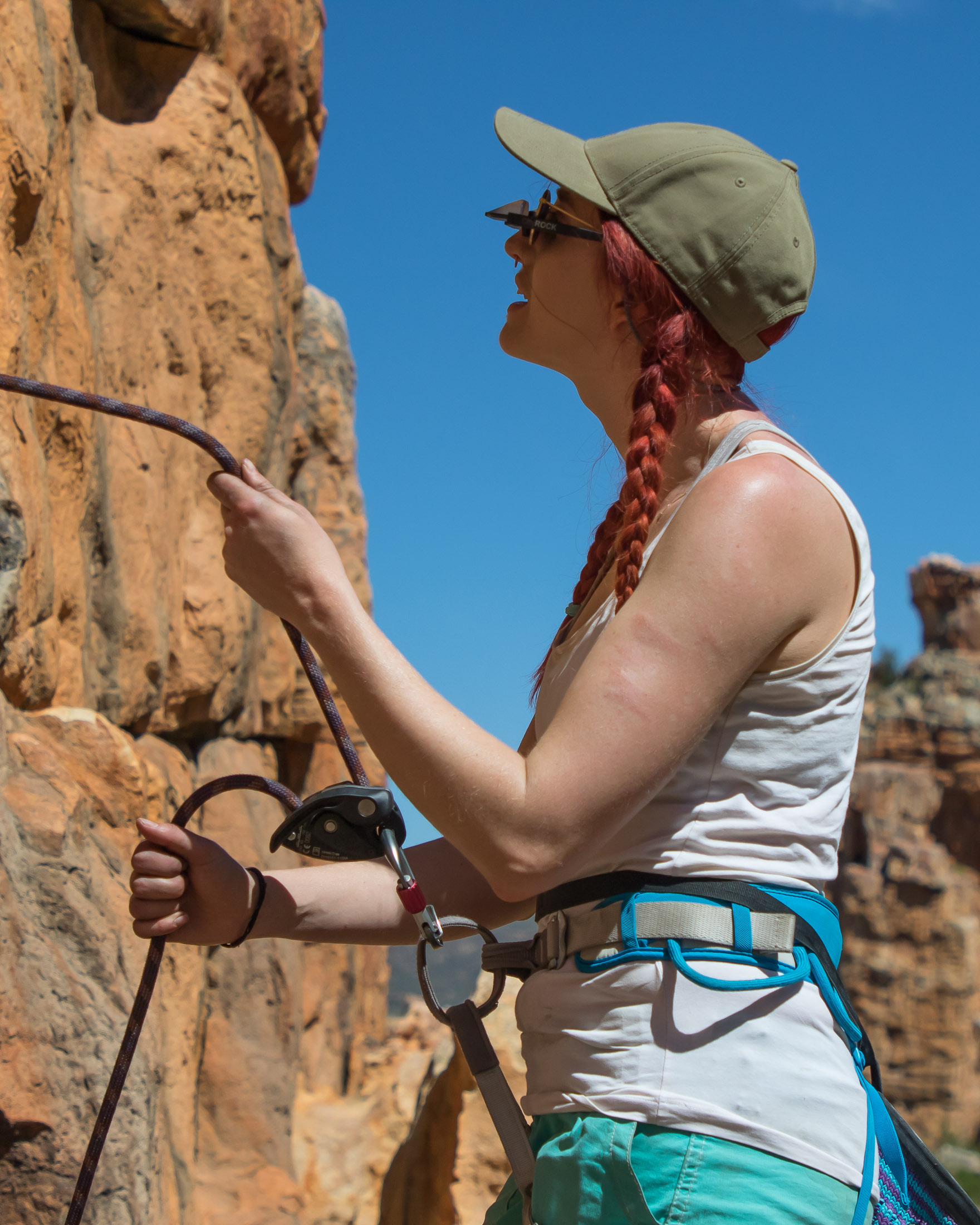
Clipping
Here we’re talking about clipping the rope to a quickdraw. Being able to conserve energy during a climb is essential if you want to climb at your limit, and being able to clip quickly and smoothly can make the difference between a sending a route and just another attempt. If you’re still fumbling clips, I suggest going over the pointers in my article on how to lead climb.
Anchor cleaning
Cleaning can mean two things. Cleaning the quickdraws from the top anchors, or removing all quickdraws from the bolts on the climb itself. Learning the techniques needed for the former is especially important as you (or your partner) will need to employ these on any route that isn’t equipped with perm-a-draw anchors (or similar hardware). The latter becomes more useful only when you start climbing steeper routes.
Projecting
Routes that are close to a climber’s limits can require many sessions to send. Such projects require special tactics including hangdogging – climbing bolt-to-bolt and resting at each quickdraw. This tactic allows a climber to work out the sequence while expending minimal energy. Just know that there is a polite and impolite way to hangdog. See my article on redpoint tactics for tips on how to avoid testing your belayer’s patience.
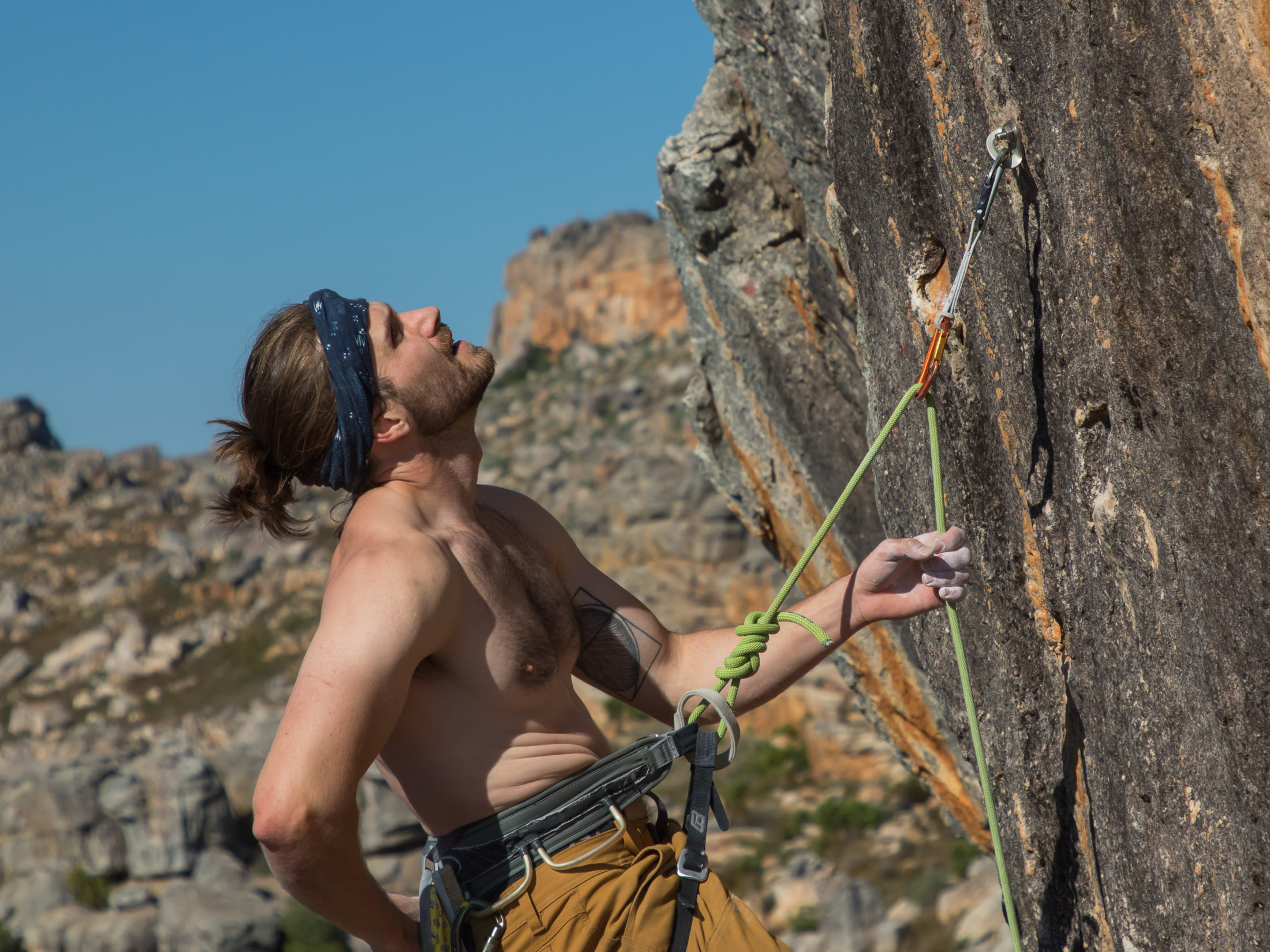
Movement skills used in sport climbing
Besides knowing how to clip, belay and clean a route, a sport climber also needs to know how to move over certain types of rock. These are the four most commonly used movement skill sets in sport climbing.
Face climbing
Sport climbing was developed precisely because many rock faces could not be protected with trad gear. So it’s no surprise that the majority of sport routes involve face climbing. If you’re wondering what face climbing is, it’s climbing that involves ascending a flattish expanse of rock largely devoid of cracks, bulges, roofs and other features. Your first foray onto rock would have probably been onto vertical or near vertical faces.
Steep climbing
The angle of faces can vary from slightly positive to steep. These steeper faces, along with roofs and bulges, require a climber to call on a skillset quite different to vertical face climbing. Drop knees, heel hooks, bicycle steps – these are all techniques employed on steeper terrain.
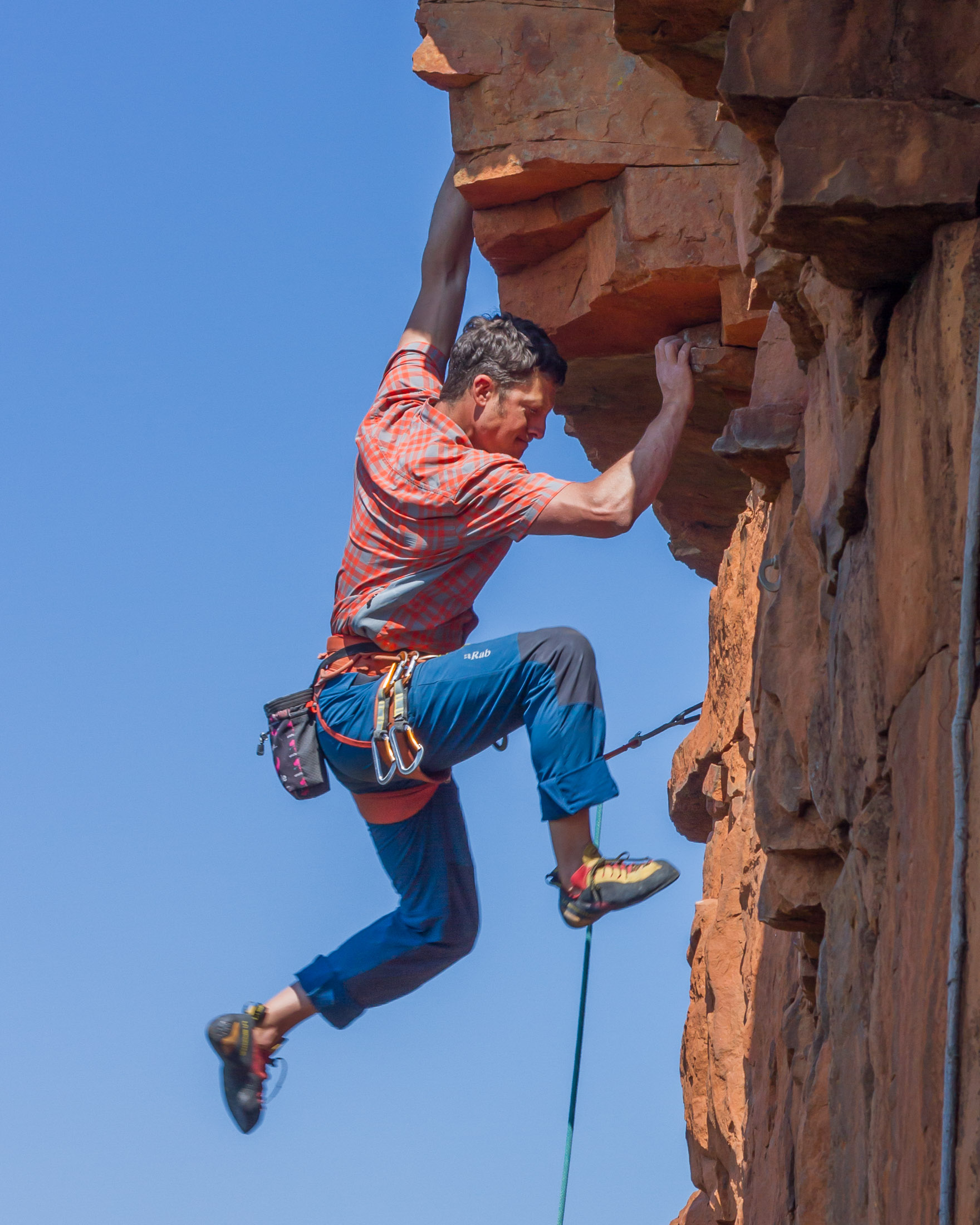
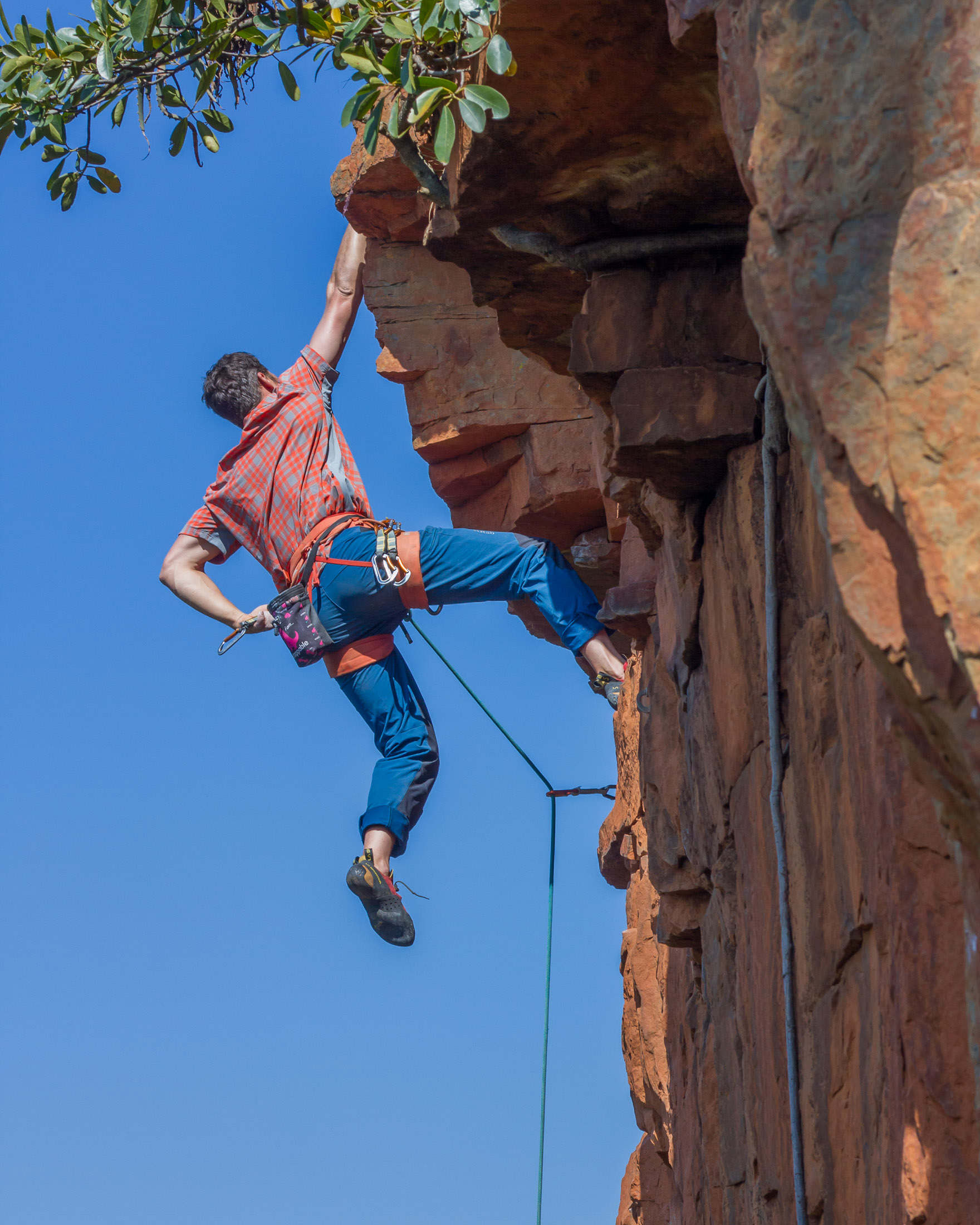
Slab climbing
Slabs aren’t as common in single pitch sport climbing as they are in trad cragging, but you will frequently find them on bolted multipitch routes. Slab climbing skills include smearing and palming, techniques that make the most of… no holds. That’s right. Slab climbing is all about climbing on friction and friction alone. It’s a great levelling factor, as pure strength is often just not useful. 5.12 climbers and 5.10 climbers are all on the same footing. Pun intended.
Resting
Although it doesn’t involve moving over rock, resting is a skill that involves body movement and your ability to find positions where you can take some weight off your taxed forearm muscles. Knowing how to rest properly often means the difference between sending and pumping out, so you’ll need to hone this skill if you want to climb at your limit.
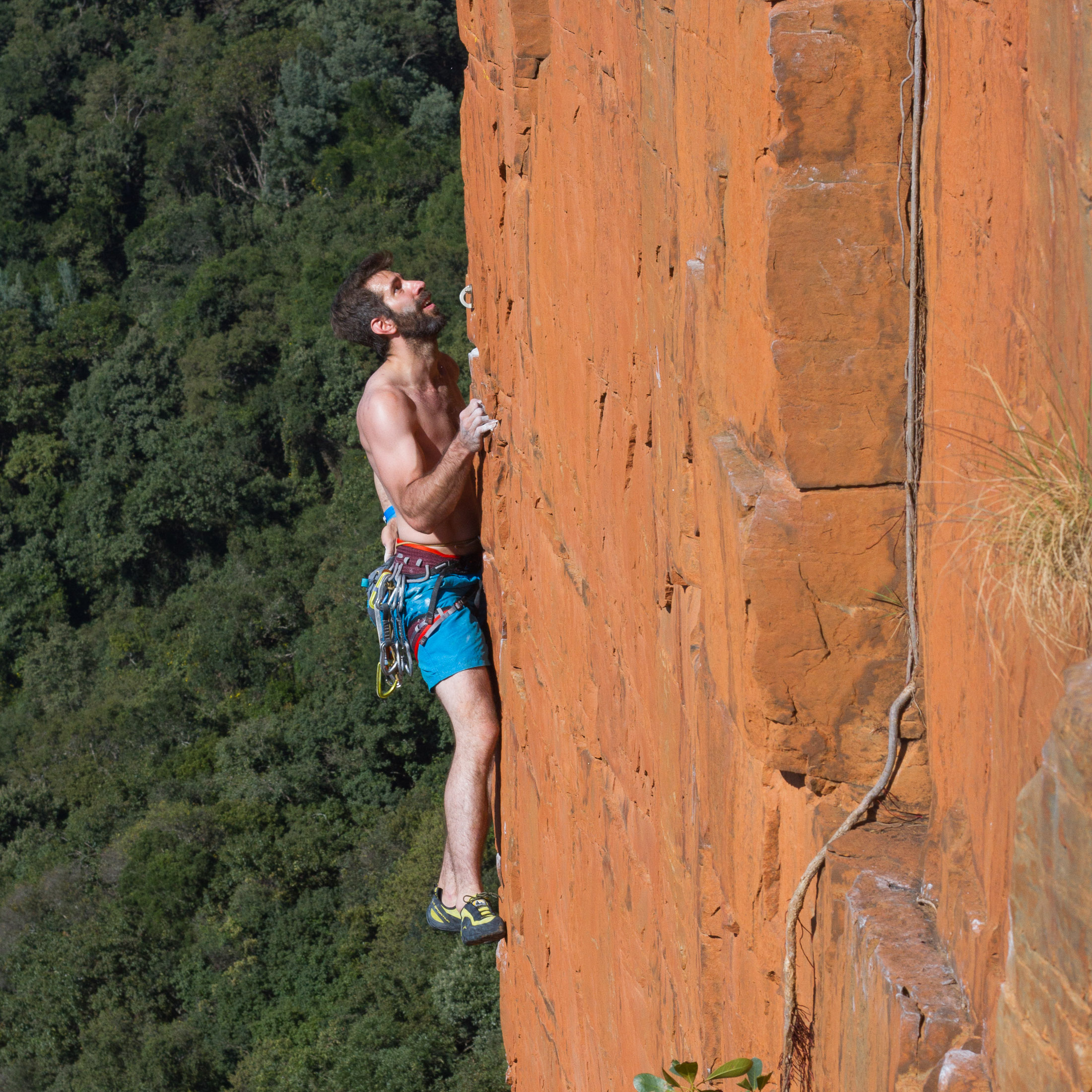
How to get started in sport climbing
If you’re just starting out and you don’t have any climber friends to take you to a crag, the logical first step is to get into a gym and do some top-rope climbing. Besides being a good place to get instruction, a gym is also a good place to meet experienced climber – some of whom will hopefully invite you along for a rock session once you have proven that you can belay properly or at least provide great crag snacks or entertainment.
If befriending experienced climbers proves difficult, you can also progress to lead climbing while still confined to the gym. With some lead experience under your belt, you would not have to rely on others to set up top ropes for you when you venture out to the crag, although I strongly recommend that you have an experienced climber watch you while you lead your first few rock routes and clean anchors for the first time. Hiring a guide instead of relying on a friend or gym recruit is also a good (or even better) solution, as an experienced guide will spot things that regular climbers will miss.
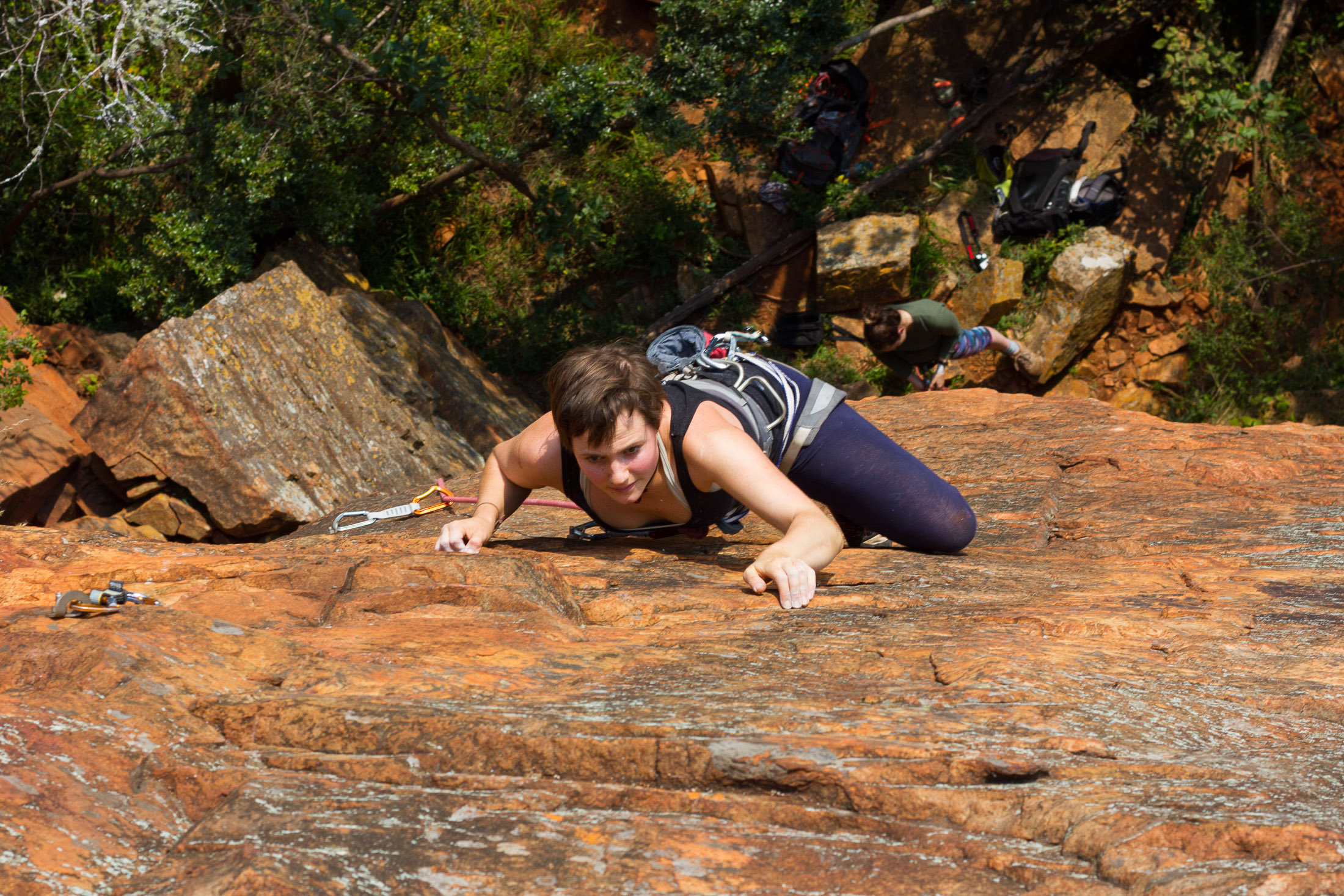
Where to sport climb
Your local crag probably has plenty to keep you busy for now, but you’ll eventually set your sights on rock further afield. When you do, you’ll find that every continent has world class sport climbing destinations. These are just some of the best in North America.
Smith Rock
Where it all started. Smith Rock National Park in Oregon was the first climbing area where routes were bolted en masse, and it still maintains its allure as a top sport climbing destination today. While most routes are single pitch, there are also some classic multipitch routes in the park. The rock is welded tuff, a type of rock that offers high friction and weathers into a variety of different features, mostly on walls that are vertical or slightly overhanging.
Rifle
The name of the game in Rifle, Colorado is hard, steep sport climbing. This riparian limestone canyon is an enduring favourite with hard climbers from nearby Denver and further afield. Why? Rifle offers one of the highest concentrations of quality 5.12’s, 5.13’s and 5.14’s almost anymore. Are there routes for middling climbers you ask? Honestly, not a whole lot, but if you do as everyone else does in Rifle, and take on a few projects, you might just be happy throwing yourself at the same two or three 5.11’s over and over.
Red Rock Canyon
Red Rock Canyon isn’t predominantly a sport climbing destination like most of the other areas on this list – it’s mostly known for its incredible trad and mixed routes – but it does offer plenty of quality sport routes, including some longer multipitch sport routes in its deep sandstone canyons. The bulk of the single pitch routes are on the hills in and around Calico basin, an area which offers great conditions even in the middle of winter
El Potrero Chico
With limestone walls up to 500 meters high, El Potrero Chico is North America’s premier multipitch sport destination. There are some single pitch climbs too, but if you’re coming to the ‘Little Corral’, it’s probably for the long multipitch routes. But there’s another reason to venture south of the border – El Potrero Chico is only a two hour drive away from El Salto, home to some of the best steep limestone on the continent.
Red River Gorge
If you asked any North American climber what their favourite sport crag is, they would probably tell you ‘The Red’. Tucked away in the hills of eastern Kentucky, this gorge boasts the best steep sandstone sport climbing in North America if not the world. Endurance climbing on large rounded holds is a staple in the Red, but then there are also enough crimps, pockets and huecos to keep things interesting.
New River Gorge
After all that praise for the Red River Gorge, it might come as a surprise to hear it might not be the most obvious choice if you’re heading for the Appalachians. Just a three hour drive away is another world class destination – the New River Gorge. Whereas the Red is known for steep pumpy climbing, the New offers a greater variety of styles with many very technical routes, making it an almost a perfect compliment to the burly routes of the Red.
Rumney
The North East also has a world class sport climbing destination, and it’s called Rumney. Like the cliffs of the New River Gorge, those around Rumney offer everything from aretes, to grooves, dikes, corners, and cracks, but the rock is very different. Whereas the sandstone of the New is bullet hard and smooth, Rumney’s schist is grained – a bit like wood – which adds friction and security to footholds.
Wild Iris
If the answer to the question “What is your favourite North American sport crag?” wasn’t the Red, it might be Wild Iris. Situated on top of rolling hills in central Wyoming, this limestone crag isn’t just one of the best sport climbing areas on the continent, it is also one of the most scenic. Routes are generally short, but what they lack in height they make up for in quality of movement with perfect pockets and edges dictating technical and sustained sequences. Unlike the other destinations on this list, this crag is best in summer.
Get out there
So there you have it – everything you need to know about sport climbing and how to get started. Go forth and leave your gumby ways in the gym. There’s a world of rock out there waiting for you to discover it. But wait – there’s one more thing. Know that there’s a wealth of information where this came from. If you’re just getting into climbing and are still learning how to give a good belay, how to choose climbing gear, or how to clean top anchors, you can find all of this and much more right here on this website. Just look under the climbing category.
